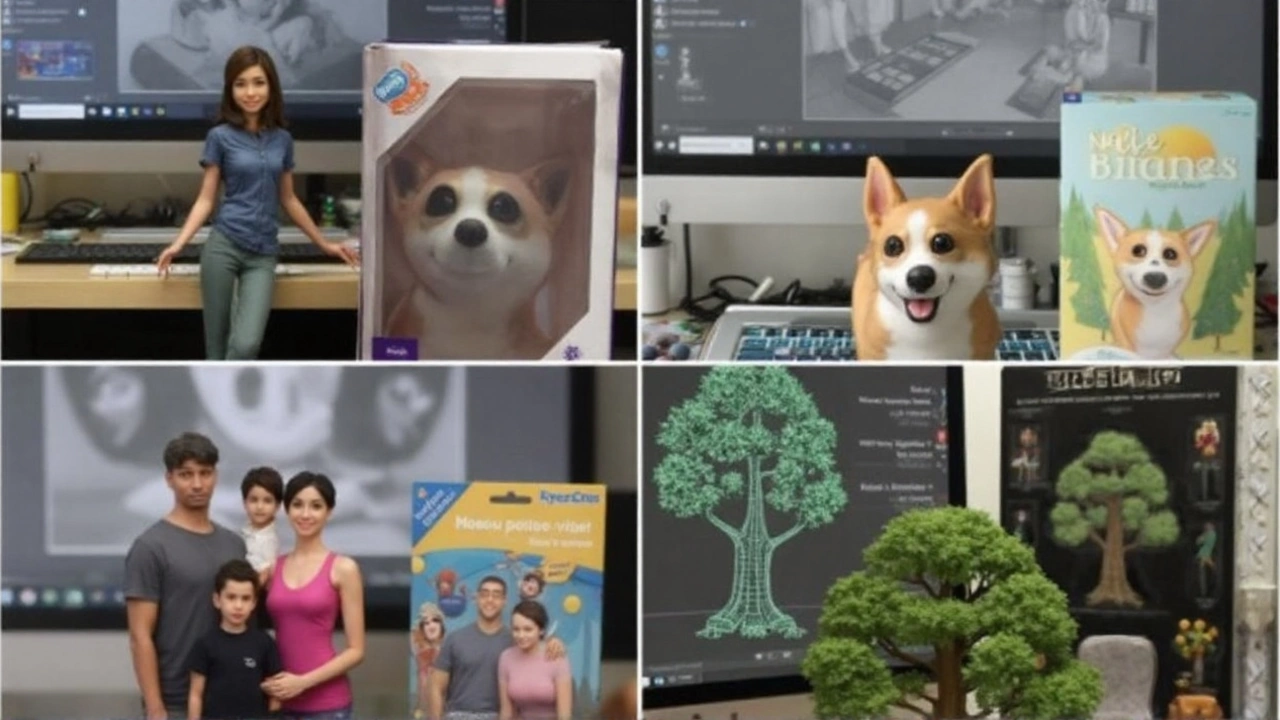AI Image Generator: Your Hands‑On Guide
Ever typed a simple sentence and watched a computer paint a picture? That’s what an AI image generator does. It reads your words, understands the scene, and creates a visual in seconds. No art degree needed – just curiosity and a clear prompt.
How It Works in Plain English
Behind the scenes, the AI has read millions of pictures and their captions. When you ask for "a sunset over a mountain lake," the model looks for patterns that match that description and blends them into a new image. It’s a bit like a super‑charged collage maker that knows what each part should look like.
The technology most often uses diffusion models. Think of it as starting with random noise and slowly sharpening it until the picture matches your request. The process happens in a few seconds on a decent computer or in the cloud.
Best Free Tools to Try Right Now
If you just want to experiment, start with these free platforms:
- Craiyon – simple, no sign‑up, great for quick sketches.
- Stable Diffusion Web UI – a bit more advanced, lets you tweak settings.
- DALL·E Mini (now called Craiyon) – good for playful ideas.
- Microsoft Designer – integrates with Office, useful for presentations.
All of them let you type a prompt and get an image within a minute. Choose one that fits your comfort level; you can always switch later.
Here’s a quick tip: start with a clear subject, then add style hints. For example, "a medieval castle at dawn, watercolor style" tells the AI both what to draw and how it should look.
Prompt Writing Tricks That Really Help
Good prompts are the secret sauce. Keep these ideas in mind:
- Be specific: Instead of "dog," try "golden retriever playing in a field of sunflowers."
- Add style references: Words like "cinematic," "pixel art," or "oil painting" guide the AI’s mood.
- Use composition terms: Phrases such as "close‑up," "wide angle," or "rule of thirds" affect framing.
- Limit conflicting ideas: Too many adjectives can confuse the model and produce messy results.
Experiment by changing one word at a time. You’ll see how each tweak shifts the final picture.
Where AI‑Generated Images Fit In Your Projects
From social media posts to prototype designs, AI images save time. Need a background for a blog? Type a brief description and drop the result into your layout. Creating concept art for a game? Sketch quick ideas and refine them later with a human artist.
Businesses also use AI visuals for marketing banners, product mock‑ups, and ad creatives. The speed of generation means you can test multiple versions without hiring a designer for each iteration.
Things to Keep in Mind
While the tech is exciting, there are a few practical concerns. Copyright can be murky – some platforms claim ownership of generated images, so read the terms before using them commercially. Also, the AI might reproduce biased or inappropriate content if the prompt isn’t clear.
Finally, remember that AI is a tool, not a replacement for creativity. Use it to spark ideas, then add your personal touch to make the result truly yours.
Ready to give it a try? Pick a free generator, type a vivid prompt, and watch the magic happen. The only limit is how you describe what you want to see.
